The Hikawa Shrine in Nakano, Tokyo offers visitors a unique chance to enjoy Japan’s rich spiritual heritage. Guided by an expert, participants can engage in traditional blessings and rituals, including writing personal wishes on ema tablets. The experience culminates with a ceremony where a priest bestows protective charms, imbuing them with sacred energy. This serene encounter not only deepens one’s understanding of Japanese culture but also provides a tangible connection to personal hopes and well-being. What makes this experience so special, and why might it appeal to those seeking a meaningful encounter with the divine?
Key Points
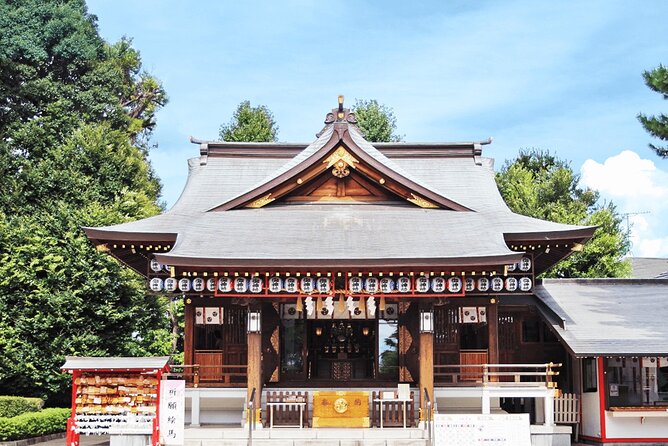
-
Immersive cultural encounter at Hikawa Shrine, led by a knowledgeable guide, featuring traditional shrine rituals, ema writing, and receiving a protective charm.
-
Opportunity to observe the iconic torii gates, tranquil shrine grounds, and local worshippers, creating a serene and immersive experience.
-
Participants engage in a blessing ceremony performed by the priest, including chanting and making offerings, gaining a deeper understanding of the shrine’s spiritual practices.
-
Participants express their hopes, gratitude, and well-being on ema, creating a tangible connection through the written prayers.
-
Participants receive an omamori, a protective charm blessed by the priest, providing a sense of reassurance and spiritual protection.
Overview of the Experience
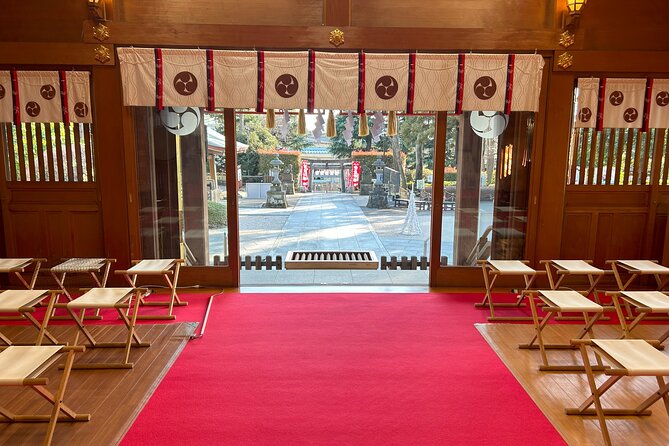
The Hikawa Shrine Blessing and Ema Prayer Experience in Nakano, Tokyo, Japan, offers visitors an immersive cultural encounter.
Led by a knowledgeable guide, the 1-hour experience allows participants to engage in traditional shrine rituals. Visitors can make an offering, receive a protective charm, and write their wishes on an ema (votive tablet).
The experience also includes an ofuda (shrine talisman). Conveniently located near Numabukuro Station, the experience accommodates up to 40 travelers.
Confirmation is provided at booking, and free cancellation is available up to 24 hours before the start time.
You can also read our reviews of more tours and experiences in Tokyo.
Visiting Hikawa Shrine
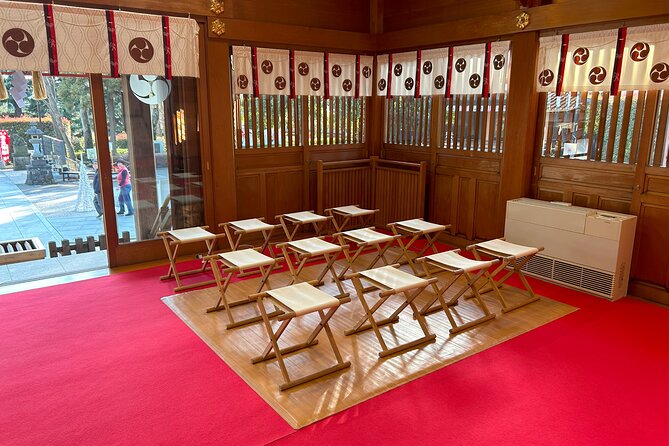
As visitors approach Hikawa Shrine, they’ll be greeted by the shrine’s iconic torii gates, signifying the sacred boundary between the mundane and the divine.
They’ll pass through the gates and enter the tranquil shrine grounds, where the main hall and smaller structures stand amidst lush greenery.
Guests will have the opportunity to observe the local worshippers performing their rituals and ceremonies, gaining insight into the rich cultural traditions of Japan.
The serene atmosphere and the opportunity to participate in the shrine’s blessing and prayer experience make this a truly immersive cultural encounter.
The Blessing Ceremony
Following their exploration of the serene shrine grounds, participants gather at the designated meeting point to begin the blessing ceremony.
The guide leads the group to the shrine’s inner sanctum, where the priest performs a traditional ritual, chanting sutras and waving a sacred wand.
Participants make their offerings, including ema tablets with their wishes written on them, and receive protective charms.
The guide explains the significance of each element, fostering a deeper understanding of the shrine’s spiritual practices.
The blessing ceremony concludes, leaving participants with a sense of renewal and connection to Japanese culture.
Writing Prayers on Ema
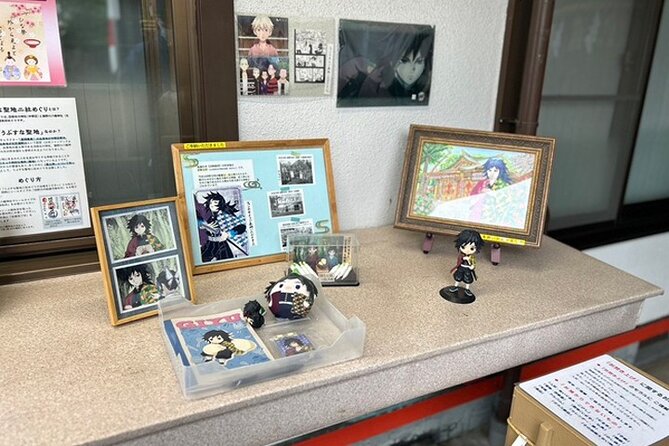
After the blessing ceremony, participants turn their attention to writing their prayers and wishes on the ema, the traditional wooden votive tablets.
The ema serve as a medium to convey one’s innermost thoughts and aspirations to the Shinto deities. Participants can express:
- Hopes for good health, success, or fulfillment of a personal goal
- Gratitude for blessings received or protection from harm
- Wishes for the well-being of loved ones
With each stroke of the brush, participants infuse the ema with their sincerest intentions, creating a tangible connection between the physical and spiritual realms.
Receiving the Protective Charm
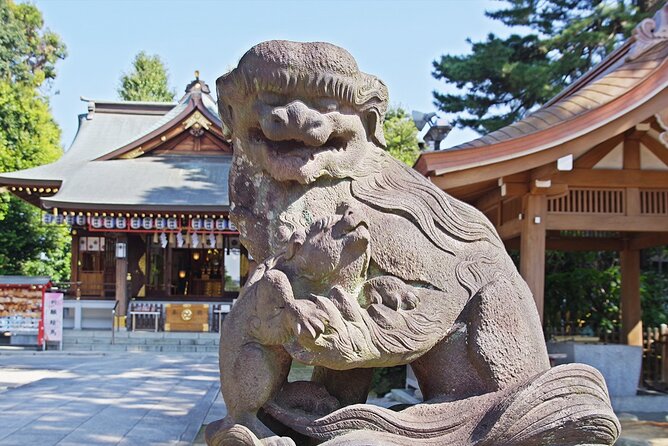
Participants now turn their attention to receiving the protective charm, known as an omamori. The guide leads the group to a designated area where the priest blesses the small, cloth-covered charms.
Each traveler selects an omamori that resonates with their personal needs, such as health, academic success, or safe travel. The priest then recites a blessing over the chosen charm, infusing it with spiritual energy.
Travelers handle the omamori reverently, recognizing its significance as a tangible reminder of the shrine’s blessing. Tucking the charm safely into a pocket or bag, participants feel a sense of reassurance and protection as they continue their shrine experience.
- Kanto 10-Hour Chartered Day Trip | Tokyo City
- Akihabara Culinary and Culture Adventure: Your Personalized
- Tokyo DisneySea: 1-Day Ticket & Private Transfer
- 1 Day Tokyo Private Charter Sightseeing Tour With Guide
- From Tokyo: Private Day Trip to Nikko
- From Tokyo: Mt. Fuji And Hakone Private Sightseeing Day Trip
Learning About Shrine Talismans
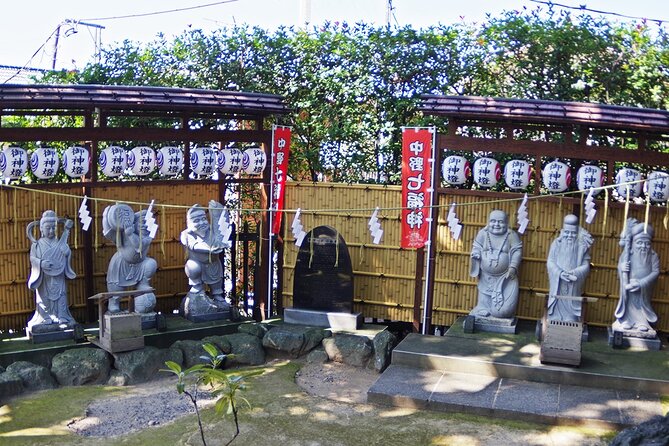
The guide then introduces the travelers to the significance of shrine talismans, known as ofuda.
These sacred paper slips carry the spirit and divinity of the shrine’s kami (deity). The ofuda serves three main purposes:
- Warding off evil and negative energies
- Bringing good luck, prosperity, and protection
- Connecting the holder to the shrines’ spiritual power
The guide explains that the ofuda is a tangible representation of the shrine’s spiritual essence, allowing visitors to take a piece of the kami’s blessing with them.
As the group receives their ofuda, they feel a sense of reverence and connection to the Hikawa Shrine.
Exploring the Shrine Grounds
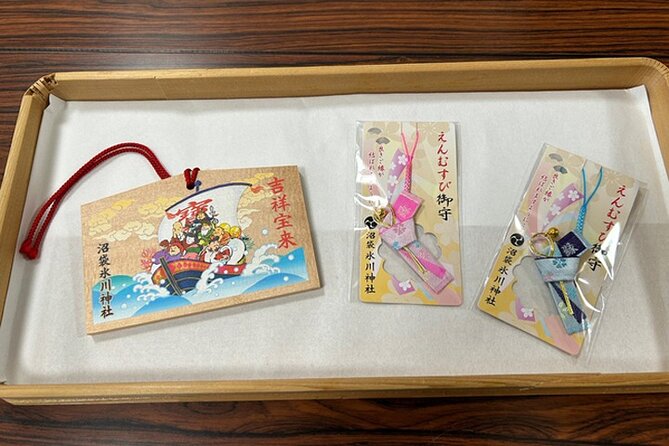
As the group approaches the Hikawa Shrine, they’re immediately struck by the serene and atmospheric environment. The lush greenery, ancient architecture, and the sound of the wind chimes create a sense of tranquility.
The guides lead the way through the main gate, explaining the significance of the Torii arch and its role in Japanese Shinto beliefs. Visitors pass by stone lanterns and witness the purification ritual at the Temizuya, the traditional water pavilion.
The group then enters the shrine grounds, where they can explore the main hall, observe worshippers, and take in the serene ambiance of this sacred space.
Reflection and Takeaways
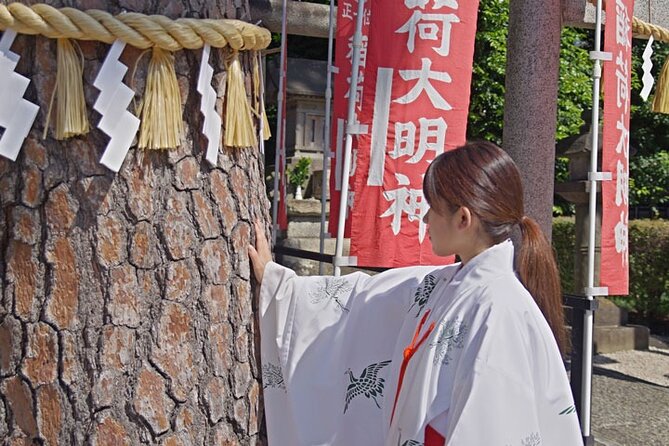
After exploring the tranquil shrine grounds, the group gathers for a moment of reflection.
The Shinto blessing and ema prayer experience has left a lasting impact, offering deeper insights:
-
A newfound appreciation for Japan’s rich cultural heritage and the significance of shrines in daily life.
-
A sense of inner peace and connection to the spiritual realm, fostered by the serene atmosphere and ritual practices.
-
A desire to continue exploring Japan’s spiritual traditions and finding ways to incorporate them into one’s own life.
The group departs the shrine, their minds and hearts filled with a renewed sense of purpose and wonder.
Frequently Asked Questions
Are There Any Restrictions on Clothing or Attire?
The experience doesn’t have any specific restrictions on clothing or attire. Participants should wear comfortable, modest clothing that’s appropriate for visiting a religious site.
Can I Take Photographs During the Experience?
Participants can take photographs throughout the experience, as the activity encourages capturing the cultural rituals and shrine atmosphere. However, they should be respectful and avoid disrupting the spiritual elements of the blessing and prayer.
Is There an Age Limit or Minimum Age Requirement?
The experience doesn’t have an age limit or minimum age requirement. Children are welcome to participate, though they’ll need to be accompanied by an adult throughout the activity.
Can I Customize or Personalize My Ema Prayer?
Guests can personalize their ema prayer by writing their wishes or messages on the tablet. The guide provides assistance with this personalization process during the experience. Customization options may vary depending on the shrine’s policies.
Is This Experience Suitable for Individuals With Mobility Issues?
The experience is not wheelchair accessible, so it may not be suitable for individuals with significant mobility issues. However, the tour operator notes that "most travelers can participate," suggesting some accessibility for those with minor mobility constraints.
Recap
The Hikawa Shrine Blessing and Ema Prayer Experience in Nakano offers a meaningful connection to Japanese spiritual traditions. Participants engage in sacred rituals, write personal wishes on ema tablets, and receive a blessing ceremony with protective charms. This serene encounter fosters a deeper understanding of Japanese culture and provides a tangible link to one’s hopes and well-being.
More Tour Reviews in Tokyo
- Tokyo: Shinobi Samurai Premium EXP for Solo Travelers, 90min
- Mt Fuji Private Tour With English Speaking Driver
- Nerikiri Wagashi-Making With Tea Ceremony Review
- Tokyo 3-Hour Guided E-bike Cycling Tour of the Citys Hidden Gems
- Official Street Go-Kart Tour – Shinagawa Shop
- 【Open 1st Anniv.】Popular Sushi Making Class Near Tokyo Tower
Not for you? Here's more things to do in Tokyo we have recnetly reviewed
- 2 Best Craft Beer Tours And Tastings In Tokyo
- 20 Best 2 Day Tours In Tokyo
- 7 Best 3 Day Tours In Tokyo
- 6 Best 4 Day Tours In Tokyo
- 25 Best Cruises And Boat Tours In Tokyo
- 25 Best Food Tours In Tokyo
- 20 Best Full-Day Tours In Tokyo
- 15 Best Helicopter Flights And Tours In Tokyo
- 2 Best BBQ Experiences In Tokyo
- 5 Best Coffee Tours And Tastings In Tokyo
- 25 Best Lunch Experiences In Tokyo
- 12 Best Massage And Relaxation Services In Tokyo
